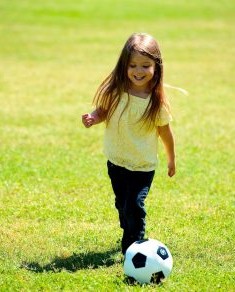When we’re little kids, playing is easy. For young children, pretending, building, running around, and climbing around are all fun activities. Fortunately, researchers continue to find more and more ways that physical play contributes to child development socially, cognitively, physically, and emotionally. Unfortunately, global playtime continues to decrease, especially physical play [1].
Physical play is one of the most endangered forms of play in our society. While physical play stays alive for some children who participate in organized sport and attend summer sports programs, overall physical play for most children has decreased more than 50% since the 1960s.
In a world where around 80% of children don’t get the recommended amount of exercise [2], and 18% of children in the world are overweight [3], physical play is more important than ever.
At Ertheo, we’ve investigated physical play to present you with the facts. In this report, we’ll talk about the decline of physical play, the health risks that lack of physical play present for children, and the benefits of physical play on children’s physical health, cognition, and academic success. Then, we’ll talk about some of the best ways to get your children to participate in more physical play.
Would you rather read later? Click below to download the PDF for free. No email required.
DOWNLOAD – PHYSICAL PLAY REPORT 2021
The decline of physical play around the world
According to the World Health Organization (WHO), children and adolescents from 5 – 17 years old should do at least 60 minutes of moderate to vigorous-intensity physical activity daily. Research shows that children and adolescents around the world are not getting anywhere near the recommended daily requirement of exercise.
Children in the U.S. are very inactive. According to the U.S. Department of Health and Human Services, only one in three children are physically active every day [5], and only 21.6% of 6 to 19-year-old children and adolescents in the U.S. attain the recommended 60 minutes of physical activity per day on at least 5 days a week. [6]
The numbers for English children and teens are quite similar. According to the International Congress on Physical Activity and public health, 15 percent of English girls and 22 percent of English boys (aged 11 to 15) were getting the recommended hour of daily exercise in 2016. And, only one in three children between 11 and 15 were taking part in any organized sports. [7]
To access physical activity on a global scale, the Active Healthy Kids Global Alliance (AHKGA; www.activehealthykids.org) recently studied and compared physical activity in 49 countries across six continents. Countries were graded on Overall Physical Activity, Organized Sport and Physical Activity, Active Play, Active Transportation, Sedentary Behavior, Physical Fitness, Family and Peers, School, Community and Environment, and Government. [8]
Check out how countries scored on the 2018 report card by clicking here.
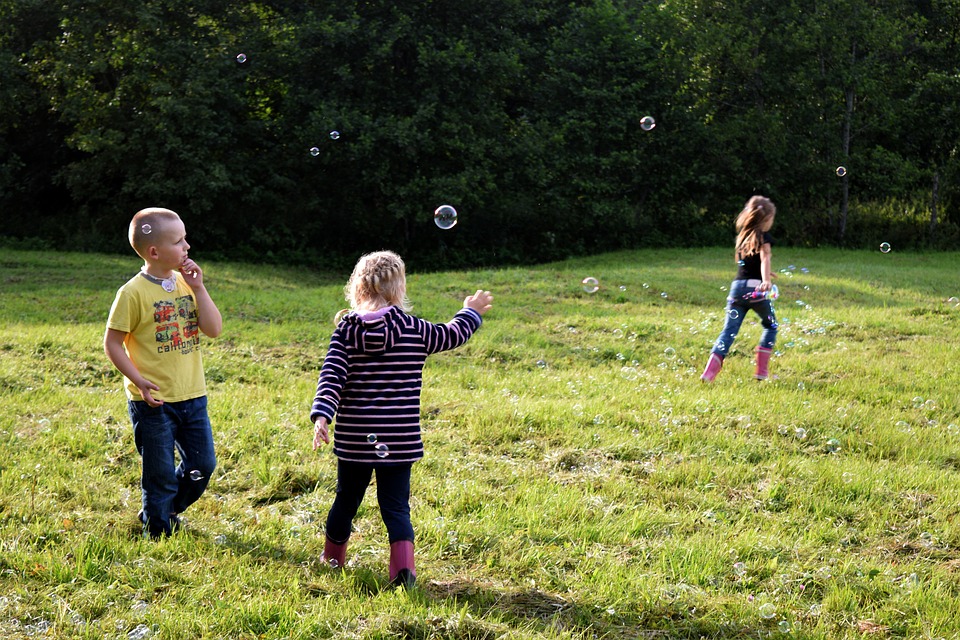
Why is physical play endangered?
The decline in physical play is thought to be related to new trends in technology and education. As screen time increases and schools cut recess and physical education requirements, children and teens become more sedentary.
Increases in screen time
Technology has been contributing to the decrease in physical activity since the invention of cars. Lately, new electronic means of foot transportation like electronic scooters and hover boards contribute to even less walking or biking and more standing or sitting. At the same time, new smart technology has contributed to an astounding increase in screen time and an equally astounding decrease in physical play.
Click here to read more about how you can use parental control to limit teens’ screen time
According to Common Sense Media, teens spend an average of nine hours a day online, compared to 6 hours for students from eight to 12 and 50 minutes for kids from 0 to eight years old. More surprisingly, even teens themselves think they have a problem. [9]
According to a new report from the Pew Research Center, 90% of teens between 13 and 17 years old say that spending too much time online is a problem for children their age. More than half of teens (54%) say they spend too much time on their cell phones, and 41% say they spend too much time on social media. [9]
As children spend more time in front of screens for entertainment, they spend less time participating in traditional active forms of play such as playing outside, climbing trees, dancing, skating, biking, and/or participating in sports programs.

Want to learn how to limit your child’s screen time? Download the free Parental Control Guide (2024). No email required.
DOWNLOAD – PARENTAL CONTROL GUIDE 2021
Decreases in physical play at school
In other news, as education is becoming more standardized and more competitive, schools throughout the world are placing more importance on math, reading, and science and forgetting the importance of physical play, physical education, and recess.
In the United States, the importance of physical play has been highly debated since No Child Left Behind was enacted in 2002. When standardized testing became the most significant way to measure students’ achievements, schools began to cut both recess time and physical education classes to make more time for math and English class. [10]
By 2014, about two out of 10 U.S. elementary schools had no daily recess, according to the U.S. Centers for Disease Control and Prevention. [11] In more recent years, state legislatures have been enforcing schools to require recess and physical education classes. That being said, these numbers are still quite small, and the U.S. is a long way from meeting youth physical activity requirements nationwide. Check out the image below from The Council of State Governments. [12]
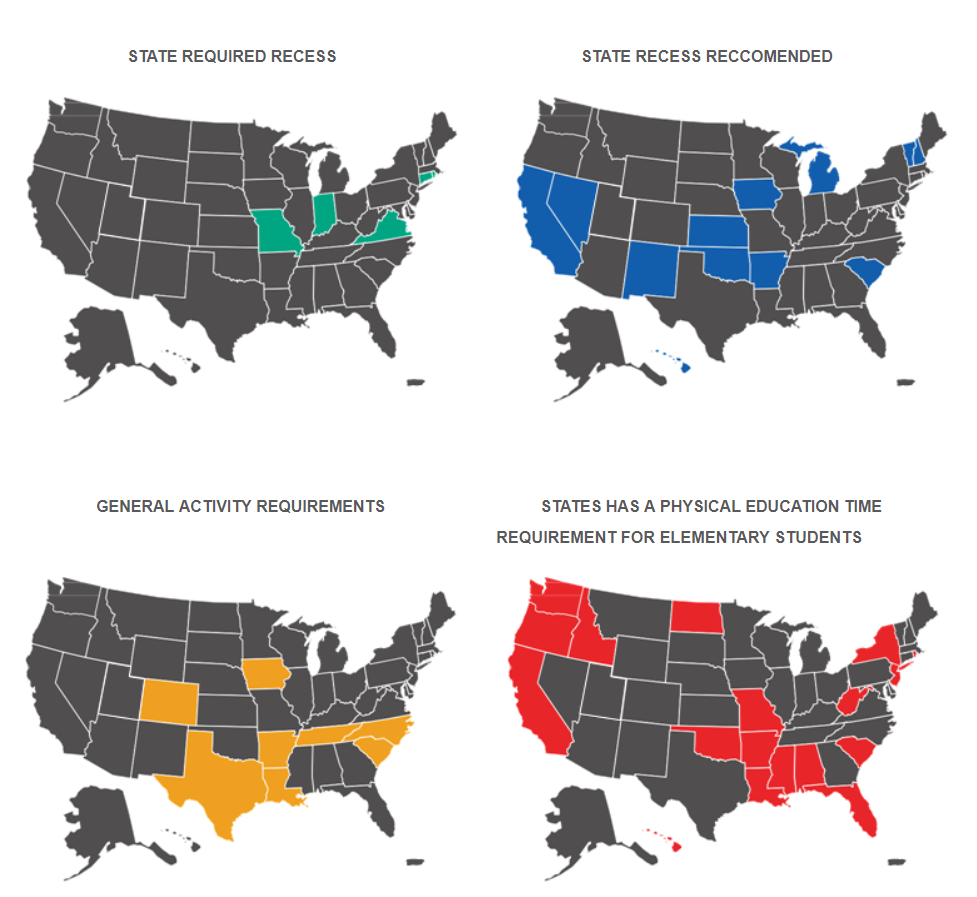
English schools are suffering a similar fate. A research report from Youth Sports Trust found that 38 percent of English secondary schools have cut scheduled Physical Education for 14-16-year-olds since 2012, while almost one in four (24%) have done so in the last academic year.
Just as is the case in the U.S., the pressure to do well on exams and in core/eBacc subjects has been recognized as one of the main causes for physical education cuts. [13]
Benefits of physical play
As physical activity and physical play throughout the world continues to decrease, researchers continue to discover ways that physical play contributes to health as well as cognitive development and academic success.
Health benefits of physical play
Overweightness and obesity are on the rise throughout the world. According to the World Health Organization,
- Over 340 million children and adolescents aged 5-19 were overweight or obese in 2016.
- The prevalence of overweight and obesity among children and adolescents aged 5-19 has risen dramatically from just 4% in 1975 to just over 18% in 2016. The rise has occurred similarly among both boys and girls: in 2016 18% of girls and 19% of boys were overweight.
- While just under 1% of children and adolescents aged 5-19 were obese in 1975, more 124 million children and adolescents (6% of girls and 8% of boys) were obese in 2016.
- Overweight and obesity are linked to more deaths worldwide than underweight. Globally there are more people who are obese than underweight – this occurs in every region except parts of sub-Saharan Africa and Asia. [14]
As mentioned earlier, WHO recommends that children and adolescents get at least 60 minutes of moderate to vigorous exercise per day.
Researchers in the medical community recognize that encouraging children to partake in physical play while they’re young is key to boosting levels of physical activity through adolescence and into adulthood. Developing healthy lifestyle habits is perhaps the most important health benefit of physical play. In fact, children who participate in sports programs during adolescence are less likely to visit the doctor during adulthood.
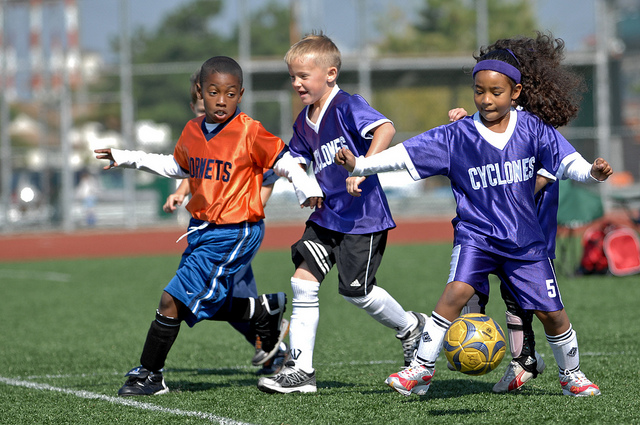
According to Psychology Today ( https://www.psychologytoday.com/us/blog/the-athletes-way/201506/physically-active-children-grow-be-healthier-adults ), “a 2014 study of World War II veterans found that the single strongest predictor of well-being in later life was whether someone played a varsity sport in high school. Across the board, people who had played a high school sport reported visiting the doctor fewer times annually throughout their lifespan.” [15].
Here are some other significant health benefits of physical play [16]:
- Aerobic endurance
- Muscle growth
- Strength
- Coordination
- Growth stimulation of major organs
- Increase bone mineral content
Fortunately, studies show that children naturally gravitate toward physical play when given the chance. In fact, 20% of children’s free play behaviors can be classified as vigorous physical activity. [16] This means that simply limiting children’s screen time could be enough to increase their physical playtime. As children spend less time in front of screens, they’ll resort to more creative forms of play which, often times, is physical.
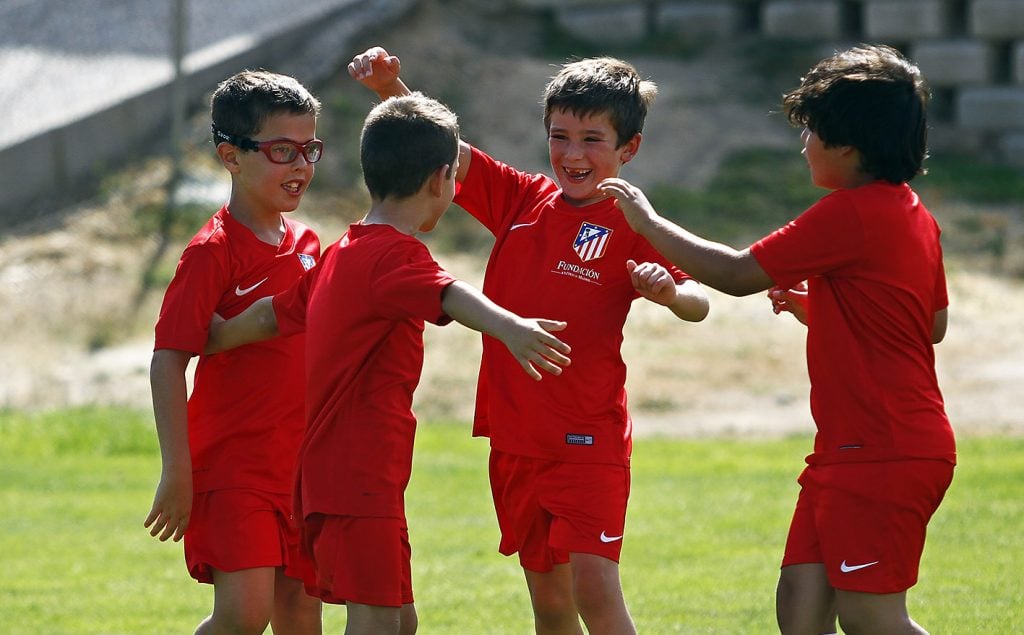
Cognitive and academic benefits of physical play
In addition to obvious health benefits, physical play also provides children with an array of cognitive benefits which ultimately contribute to academic success. The Children’s Museum of Minnesota published a research report titled, The Power of Play: A Research Summary on Play and Learning in 2012. [16]
According to the report, cognitive benefits of physical play include:
- Development and expression of self-regulation – When children run around playing tag or chase, they are operating at a high level of arousal. When the game is over, they must control their behavior to disengage and settle down. As children engage and disengage in vigorous activity, in the form of physical play, they learn the art of self-control and self-regulation. [16]
- Improvement of executive function – Executive function skills are the mental processes that enable us to plan, focus attention, remember instructions, and juggle multiple tasks successfully. [17] Organized sports require sustained attention and disciplined action. At soccer practice, students must listen to instructions for drills, remember them, and focus on doing them correctly. All of which trains and improves executive function skills.
- Increased attention in academic tasks – Similarly, according to an old study conducted in 1983, school-aged children who were assigned to five additional hours per week of physical activity performed better on standardized academic assessments than their peers who did not take part in physical activities. Another old study conducted in 1993 yielded similar results – third graders were found to be more attentive to in-class activities after recess than they were before it. A study in 2009 indicated that physical play leads to increased attention to academic tasks, which explains the positive correlation between test scores and physical play. [16]
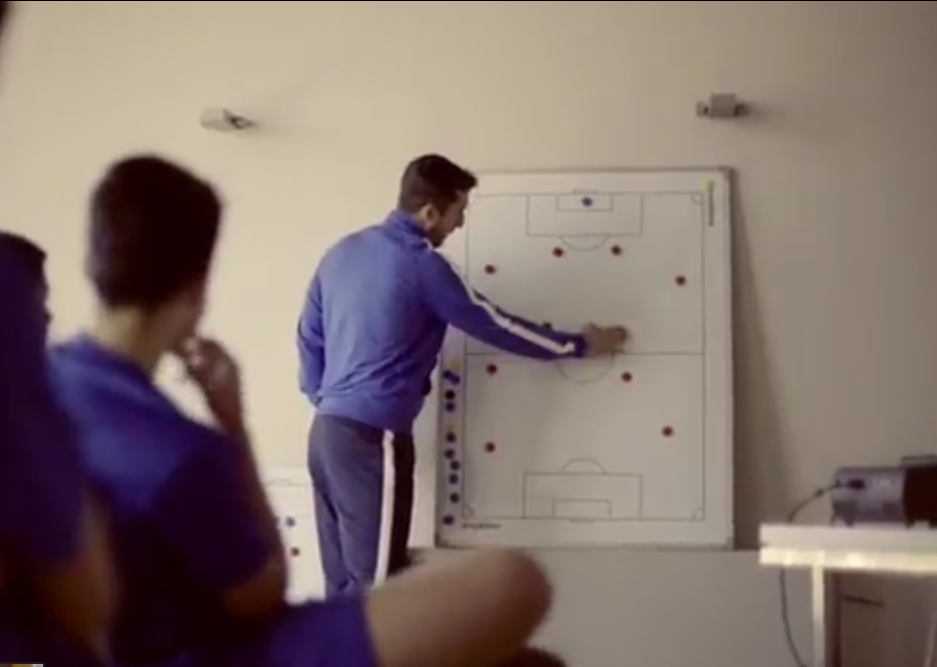
More recently, researchers published “Physical Activity and Cognitive Functioning of Children: A Systematic Review” in the International Journal of Environment Research and Public Health in April 2018. [18]
Here’s a summary of what researchers know so far about the cognitive benefits of physical activity and physical play. Children’s engagement in physical activity may be associated with changes to certain brain structures resulting in:
- Improved memory function (working memory in particular)
- Improved cognitive control (decision making skills)
- Improved cognitive flexibility (ability to shift thinking from one concept to another)
- Improved verbal skills (use and comprehension of language)
- Improved ability to learn a second language
- Improved spelling performance
- Improved understanding of language and syntax
All in all, physical play has been positively linked to better health, better cognition function, and better test scores. It’s curious that schools continue to cut recess and physical education from their curriculum.
Discussion and Increasing Physical Playtime
Despite research over the last 50 years indicating clear health benefits, as well as cognitive and academic benefits of physical play, the amount of physical play throughout the world continues to decline.
Although new smart technology presents a vast array of benefits for learning, this same technology has led to a significant increase in screen time and an equally significant decrease in physical playtime. Additionally, in general, schools continue to ignore the cognitive and academic benefits of recess and physical education on the false notion that more class time leads to more success in standardized testing.
At the same time, this lack of physical activity and physical play is contributing to world obesity where the percentage of overweight children jumped from 4% in 1975 to 18% in 2016.
Fortunately, many organizations and institutions like Ertheo Sports and Education, Caring for Kids, the Active Healthy Kids Global Alliance, the Minnesota Children’s Museum, and the IPEMA’s Voice of play are doing their best to educate parents about the importance of reducing screen time and increasing physical play.




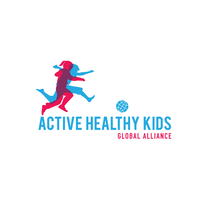
Check out the chart below for some ideas about how to increase physical play in your home brought to you by Ertheo Education and Sports.
Pro tip: You can limit your child’s screen time by setting parental controls on almost all electronic devices. Download this free Parental Control Guide 2023 to find out how.
| Age | How much exercise | How much screen time | Suggestions |
| 0 – 12 months | Physically active several times daily At least 30 minutes of tummy time daily | No sedentary screen time | Roll and Reach – Encourage baby to practice rolling and moving while on their tummy: Use toys to motivate baby to reach and rotate on their tummy to get the toys. |
| 1 – 2 years | 180 minutes per dayspread throughout the day Energetic play | No sedentary screen time | Fun-focused activitiesEncourage explorationWalk on pillowsMake a road in the houseMore activities |
| 3 – 5 years | 180 minutes per day spread throughout the day At least 60 minutes of energetic play | 1 hour maximum sedentary screen time | Fun-focused activitiesEncourage explorationStill not coordinated enough for organized sport. Instead, try: Walking or running, playing tag, swimming (when at least 4 years old), tumbling, dancing, throwing, and catching.More activities |
| 5 – 9 years | At least 60 minutes of moderate to vigorous activity every day. | 2 hour maximum sedentary screen time | Fun-focused organized sports or games:Playing tag, cops and robbers, soccer, tennis, basketball, or other sports |
| 10 – 12 years | At least 60 minutes of moderate to vigorous activity every day. 20 minutes or more of vigorous activity three to four days a week | 2 hour maximum sedentary screen time | Ready for team sports that focus on skill development (elements of fun included) Other fun, active activities include martial arts and outdoor adventure sports like mountain biking, skiing, mountain climbing, or hiking. |
| 13 – 17 years | At least 60 minutes of moderate to vigorous activity every day. 20 minutes or more of vigorous activity three to four days a week | 2 hour maximum sedentary screen time | Ready for competitive sportsPersonal fitness (going to the gym or attending a fitness class)Active modes of transportation (walking or biking)Other activities: Hiking, canoeing, rafting, paintball, pick-up sports |
Learn more about the benefits of play
Check out this infographic from wetheparents.org which presents 43 additional benefits of play!
Learn more about the importance of free play at We The Parents.

References
- https://www.childrensmuseums.org/images/MCMResearchSummary.pdf
- https://www.cdc.gov/healthyschools/physicalactivity/facts.htm
- https://www.who.int/news-room/fact-sheets/detail/obesity-and-overweight
- https://www.who.int/news-room/fact-sheets/detail/physical-activity
- https://www.hhs.gov/fitness/resource-center/facts-and-statistics/index.html
- https://www.cdc.gov/healthyschools/physicalactivity/facts.htm
- https://www.telegraph.co.uk/news/2016/11/20/british-children-among-the-least-active-in-the-world-with-exerci/
- https://www.activehealthykids.org/2018/11/26/childhood-physical-inactivity-reaches-crisis-levels-around-the-globe/
- https://qz.com/1367506/pew-research-teens-worried-they-spend-too-much-time-on-phones/
- https://time.com/4982061/recess-benefits-research-debate/
- https://neatoday.org/2016/07/14/bringing-recess-back/
- https://www.educationbusinessuk.net/news/19022018/pe-secondary-schools-being-cut-school-day
- https://www.who.int/news-room/fact-sheets/detail/obesity-and-overweight
- https://www.childrensmuseums.org/images/MCMResearchSummary.pdf
- https://developingchild.harvard.edu/science/key-concepts/executive-function/
- https://www.ncbi.nlm.nih.gov/pmc/articles/PMC5923842/

